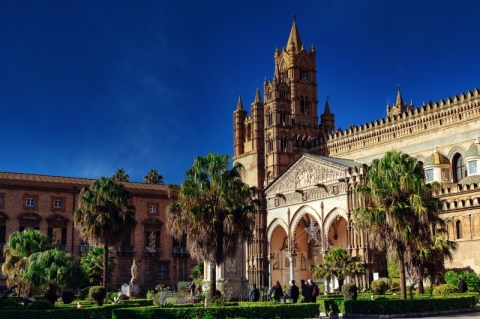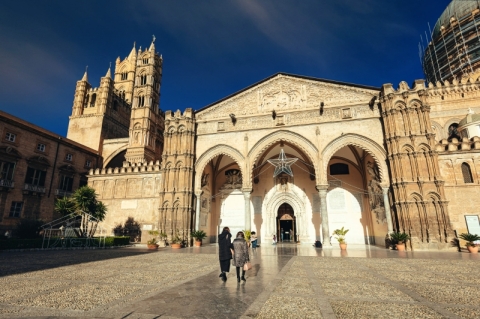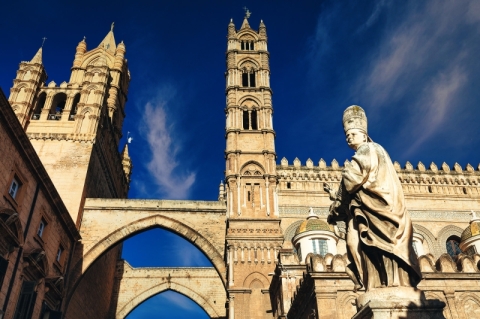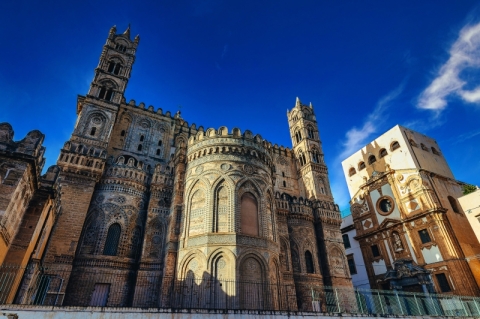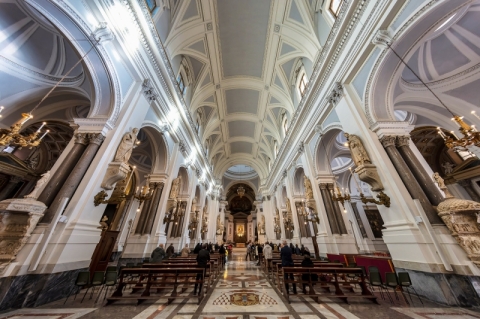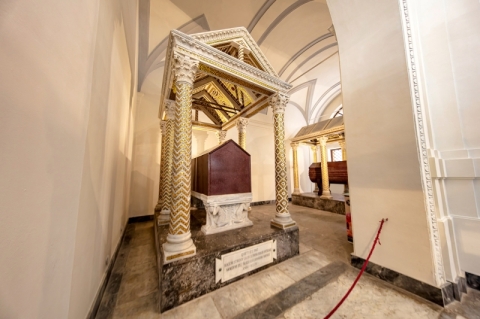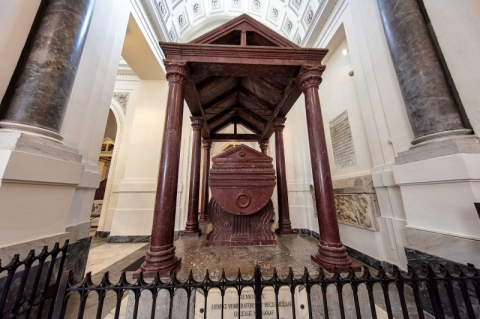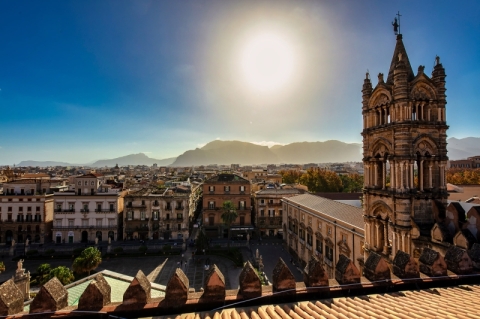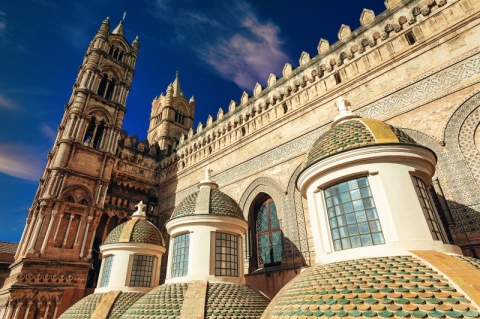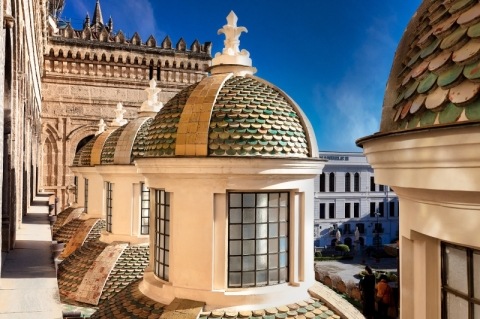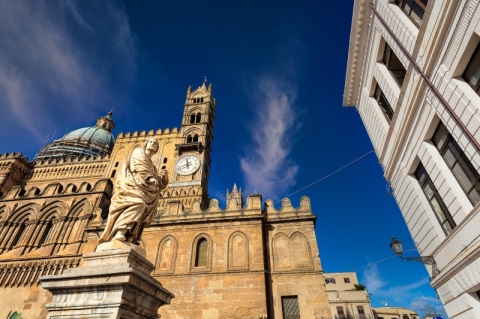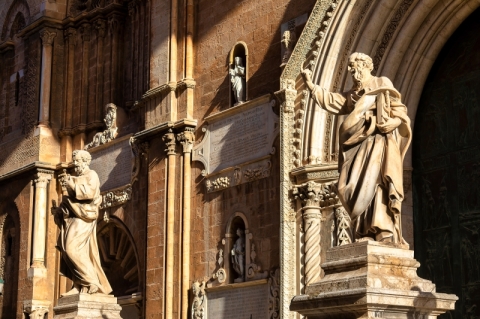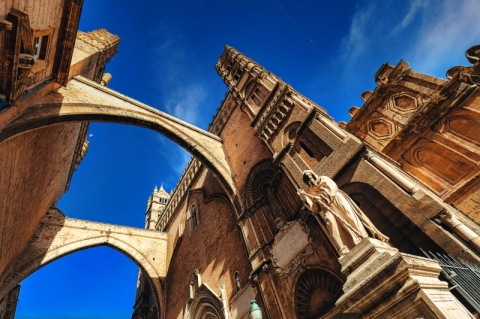Travel
UNESCO Palermo Cathedral Sicily Italy
Palermo Cathedral

UNESCO Palermo Cathedral Sicily Italy (Source: Roberto Magni Daniela Comi By Foto ReD Photographi)
USPA NEWS -
The Cathedral of Palermo is one of the most characteristic works of the city: its originality derives from the mixture of forms and styles in a single architectural body.
Derived from the different and multiple populations that, over the centuries, have alternated on Sicilian soil.
The Cathedral of Palermo was built in 1184 by order of Archbishop Gualtiero Offamilio, in honor of the Virgin Assumption into heaven.
It was built on a site that until then had hosted a previous place of worship;
mosque during the Arab regency period;
converted into a building of Christian worship following the expulsion of the Saracens and the settlement of the Normans.
Derived from the different and multiple populations that, over the centuries, have alternated on Sicilian soil.
The Cathedral of Palermo was built in 1184 by order of Archbishop Gualtiero Offamilio, in honor of the Virgin Assumption into heaven.
It was built on a site that until then had hosted a previous place of worship;
mosque during the Arab regency period;
converted into a building of Christian worship following the expulsion of the Saracens and the settlement of the Normans.
The entire city, with its history, presents a multiplicity of forms and techniques including Roman, Norman, Greek, Arab, with the addition of Sicilian Baroque.
In fact, following the succession of actors on the political scene in Palermo, traditions, religious beliefs and mentalities change.
Therefore different architectural styles all converged in the structure of the cathedral, with the predominance, however, of the style typical of the 12th century: the Norman one.
However, most of the changes and additions date back to the 18th century:
the plan of the church becomes, for example, a Latin cross;
the interior is brought back to the neoclassical model;
a dome was built at the intersection of the lateral arms with the central nave (transept).
The addition of the dome is due to Ferdinando Fuga, between the end of the eighteenth century and the beginning of the nineteenth century, and diverges from the previous style of the church.
Exterior of Palermo Cathedral
As regards the exterior of the Palermo cathedral, it is embellished with four Norman-type towers.
These have mullioned windows and small columns, which are inserted along the four corners of the building.
In the southern part the cathedral is connected, via two pointed arches, with the Archbishop's Palace:
these are characteristics that make the church similar to a castle and a symbol of temporal rather than spiritual power.
On the right side of the church, however, an elegant portico overlooks a square.
It is accompanied on the sides by two turrets and embellished with three ogival arches in Gothic style resting on small columns.
In addition to decorations with floral motifs, the tympanum also bears the Aragonese coat of arms and that of the Senate of Palermo.
The plurality of orders, not only architectural, is also evident from the engraving on the first column to the left of the portico:
in fact, a passage from the Koran is imprinted in the stone, certainly the result of the use of the structure as a place of Muslim worship.
The interior of Palermo cathedral: the tomb of the kings.
As regards the interior, the Palermo cathedral has a classic Latin cross plan:
In the right nave, two chapels house the tombs of the kings and emperors who governed the city.
Among the most important, we remember the sarcophagus of Frederick II and that of Roger II.
There is a legend about these tombs: this tells of Roger II's desire to be buried in the cathedral of Cefalù together with his entire family.
He had also decided to have splendid tombs built for his body in porphyry, a highly prized granite of volcanic origin.
In 1215, however, it seems that Frederick II appropriated the tombs and assigned them to himself and his father Henry VI, having them transported from Cefalù to the cathedral of Palermo.
Furthermore, the remains of Constance of Aragon, wife of Frederick II, and those of Peter II of Aragon are preserved in the Cathedral.
more information: https://www.redmagazine.red
Liability for this article lies with the author, who also holds the copyright. Editorial content from USPA may be quoted on other websites as long as the quote comprises no more than 5% of the entire text, is marked as such and the source is named (via hyperlink).

